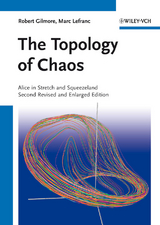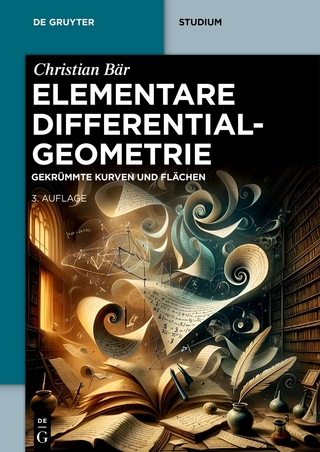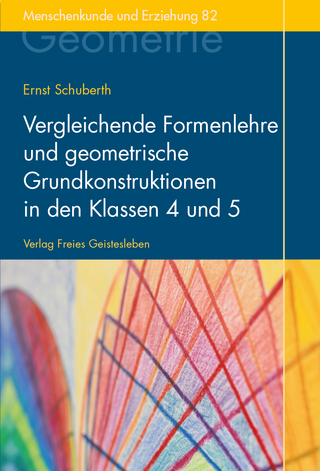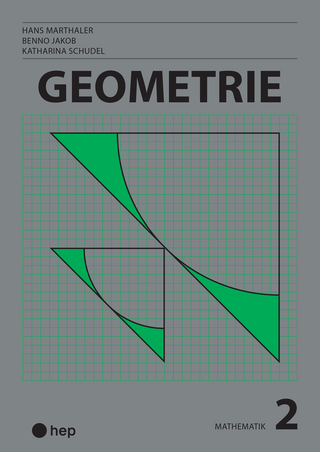The Topology of Chaos
Wiley-VCH (Verlag)
978-3-527-41067-5 (ISBN)
A highly valued resource for those who wish to move from the introductory and preliminary understandings and the measurement of chaotic behavior to a more sophisticated and precise understanding of chaotic systems. The authors provide a deep understanding of the structure of strange attractors, how they are classified, and how the information required to identify and classify a strange attractor can be extracted from experimental data.In its first edition, the Topology of Chaos has been a valuable resource for physicist and mathematicians interested in the topological analysis of dynamical systems. Since its publication in 2002, important theoretical and experimental advances have put the topological analysis program on a firmer basis. This second edition includes relevant results and connects the material to other recent developments. Following significant improvements will be included:* A gentler introduction to the topological analysis of chaotic systems for the non expert which introduces the problems and questions that one commonly encounters when observing a chaotic dynamics and which are well addressed by a topological approach: existence of unstable periodic orbits, bifurcation sequences, multistability etc.* A new chapter is devoted to bounding tori which are essential for achieving generality as well as for understanding the influence of boundary conditions. * The new edition also reflects the progress which had been made towards extending topological analysis to higher-dimensional systems by proposing a new formalism where evolving triangulations replace braids. * There has also been much progress in the understanding of what is a good representation of a chaotic system, and therefore a new chapter is devoted to embeddings.* The chapter on topological analysis program will be expanded to cover traditional measures of chaos. This will help to connect those readers who are familiar with those measures and tests to the more sophisticated methodologies discussed in detail in this book.* The addition of the Appendix with both frequently asked and open questions with answers gathers the most essential points readers should keep in mind and guides to corresponding sections in the book. This will be of great help to those who want to selectively dive into the book and its treatments rather than reading it cover to cover.What makes this book special is its attempt to classify real physical systems (e.g. lasers) using topological techniques applied to real date (e.g. time series). Hence it has become the experimenter?s guidebook to reliable and sophisticated studies of experimental data for comparison with candidate relevant theoretical models, inevitable to physicists, mathematicians, and engineers studying low-dimensional chaotic systems.
ROBERT GILMORE, PhD, is a professor in the Physics Department of Drexel University, Philadelphia, Pennsylvania. MARC LEFRANC, PhD, is a researcher at the Centre National de la Recherche Scientifique in the Laboratoire de Physique des Lasers, Atomes, Molécules at the Université des Sciences et Technologies de Lille, France. The authors are internationally recognized leaders in the field who have been developing these techniques for about two decades. As active members in the community they are knowledgeable about the broader context of their book's subject.
Preface
1. Introduction
2. Discrete Dynamical Systems: Maps
3. Continuous Dynamical Systems: Flows
4. Topological Invariants
5. Branched Manifolds
6. Topological Analysis Program
7. Folding Mechanisms: A2
8. Tearing Mechanisms: A3
9. Unfoldings
10. Symmetry
11. Bounding Tori
12. Representation Theory for Strange Attractors
13. Flows in Higher Dimensions
14. Program for Dynamical System Theory
Appendix A: Determining Templates from Topological Invariants
Appendix B: Embeddings
References
On the first edition
"A short review can only hint at the wealth of ideas here...highly recommended." (Choice, Vol. 40, No. 7, March 2003)
"In this third book Gilmore and Lefranc step one more rung up the ladder of dynamical complexity..." (American Journal of Physics, Vol. 71, No. 5, May 2003)
"This authoritative monograph advances innovative methods for the analysis of chaotic systems." (Journal of Mathematical Psychology, Vol. 47, 2003)
| Erscheint lt. Verlag | 16.11.2011 |
|---|---|
| Verlagsort | Weinheim |
| Sprache | englisch |
| Maße | 170 x 240 mm |
| Gewicht | 1305 g |
| Themenwelt | Mathematik / Informatik ► Mathematik ► Geometrie / Topologie |
| Naturwissenschaften ► Physik / Astronomie | |
| Schlagworte | Analytische Geometrie • Chaos • Chaos / Fractal / Dynamical Systems • Chaos, Fraktale u. dynamische Systeme • Differentialrechnung • Ingenieurwesen • Integralrechnung • Lineare Algebra • Mathematics • Mathematik • Nichtlineare u. komplexe Systeme • Nonlinear and Complex Systems • Physics • Physik • Topologie |
| ISBN-10 | 3-527-41067-8 / 3527410678 |
| ISBN-13 | 978-3-527-41067-5 / 9783527410675 |
| Zustand | Neuware |
| Haben Sie eine Frage zum Produkt? |
aus dem Bereich




